First Alert SA710 Bedienungsanleitung
First Alert
Rauchmelder
SA710
Lies die bedienungsanleitung für First Alert SA710 (6 Seiten) kostenlos online; sie gehört zur Kategorie Rauchmelder. Dieses Handbuch wurde von 32 Personen als hilfreich bewertet und erhielt im Schnitt 3.5 Sterne aus 16.5 Bewertungen. Hast du eine Frage zu First Alert SA710 oder möchtest du andere Nutzer dieses Produkts befragen? Stelle eine Frage
Seite 1/6

IMPORTANT!
PLEASE READ CAREFULLY AND SAVE.
This user’s manual contains important information about your Smoke
Alarm’s operation. If you are installing this Smoke Alarm for use by
others, you must leave this manual—or a copy of it—with the end user.
USER’S MANUAL
Printed in Mexico
M08-0049-005 05/07K1
Model SA710
TABLE OF CONTENTS
Fire Safety Tips . . . . . . . . . . . . . . . . . . . . . . . . . . . . . . . . . . . . . . . . . .1
Before You Install This Smoke Alarm . . . . . . . . . . . . . . . . . . . . . . . .1
How To Install This Smoke Alarm . . . . . . . . . . . . . . . . . . . . . . . . . . . 2
Optional Locking Features . . . . . . . . . . . . . . . . . . . . . . . . . . . . . . . . 3
Weekly Testing . . . . . . . . . . . . . . . . . . . . . . . . . . . . . . . . . . . . . . . . . . 3
Regular Maintenance . . . . . . . . . . . . . . . . . . . . . . . . . . . . . . . . . . . . . 3
If This Smoke Alarm Sounds . . . . . . . . . . . . . . . . . . . . . . . . . . . . . . .4
What To Do In Case Of Fire . . . . . . . . . . . . . . . . . . . . . . . . . . . . . . . .4
Using the Silence Feature . . . . . . . . . . . . . . . . . . . . . . . . . . . . . . . . . .4
If You Suspect A Problem . . . . . . . . . . . . . . . . . . . . . . . . . . . . . . . . . .4
Limited Warranty . . . . . . . . . . . . . . . . . . . . . . . . . . . . . . . . . . . . . . . . .4
Recommended Locations For Smoke Alarms . . . . . . . . . . . . . . . .4-5
Locations To Avoid For Smoke Alarms . . . . . . . . . . . . . . . . . . . . . . .5
About Smoke Alarms . . . . . . . . . . . . . . . . . . . . . . . . . . . . . . . . . . . . . .6
Special Compliance Considerations . . . . . . . . . . . . . . . . . . . . . . . . .6
Limitations Of Smoke Alarms . . . . . . . . . . . . . . . . . . . . . . . . . . . . . . .6
© 2007 BRK Brands, Inc., a Jarden Corporation company (NYSE: JAH)
3901 Liberty Street Road, Aurora, IL 60504-8122
All rights reserved.
Consumer Affairs: (800) 323-9005 • www.firstalert.com
FIRE SAFETY TIPS
Follow safety rules and prevent hazardous situations: 1) Use smoking
materials properly
. Never smoke in bed. 2) Keep matches or lighters
away from children; 3) Store flammable materials in proper containers;
4) Keep electrical appliances in good condition and don’t overload elec-
trical cir
cuits; 5) Keep stoves, barbecue grills, fireplaces and chimneys
grease- and debris-free; 6) Never leave anything cooking on the stove
unattended; 7) Keep portable heaters and open flames, like candles,
away from flammable materials; 8) Don’t let rubbish accumulate.
Keep alarms clean, and test them weekly. Replace alarms immediately
if they are not working properly. Smoke Alarms that do not work cannot
alert you to a fire. Keep at least one working fire extinguisher on every
floor, and an additional one in the kitchen. Have fire escape ladders or
other reliable means of escape from an upper floor in case stairs are
blocked.
BEFORE YOU INSTALL THIS SMOKE ALARM
Important! Read “Recommended Locations for Smoke Alarms”
and “Locations to Avoid for Smoke Alarms” before beginning. This
unit monitors the air, and when smoke reaches its sensing chamber,
it alarms. It can give you more time to escape before fire spreads.
This unit can ONLY give an early warning of developing fires if it is
installed, maintained and located where smoke can reach it, and where
all residents can hear it, as described in this manual. This unit will not
sense gas, heat, or flame. It cannot prevent or extinguish fires.
Understand The Different Type of Smoke Alarms
Battery powered or electrical? Different Smoke Alarms provide
different types of protection. See “About Smoke Alarms” for details.
Know Where To Install Your Smoke Alarms
Fire Safety Professionals recommend at least one Smoke Alarm on
every level of your home, in every bedroom, and in every bedroom
hallway or separate sleeping area. See “Recommended Locations
For Smoke Alarms” and “Locations To Avoid For Smoke Alarms” for
details.
Know What Smoke Alarms Can and Can’t Do
A Smoke Alarm can help alert you to fire, giving you precious time to
escape. It can only sound an alarm once smoke reaches the sensor.
See “Limitations of Smoke Alarms” for details.
Check Your Local Building Codes
This Smoke Alarm is designed to be used in a typical single-family
home. It alone will not meet requirements for boarding houses,
apartment buildings, hotels or motels. See “Special Compliance
Considerations” for details.
*All First Alert
®
Smoke Alarms conform to regulatory requirements,
including UL217 and are designed to detect particles of combustion.
Smoke particles of varying number and size are produced in all fires.
Ionization technology is generally mor
e sensitive than photoelectric
technology at detecting small particles, which tend to be pr
oduced
in greater amounts by flaming fires, which consume combustible
materials rapidly and spread quickly. Sources of these fires may include
paper burning in a wastebasket, or a grease fire in the kitchen.
Photoelectric technology is generally more sensitive than ionization
technology at detecting large particles, which tend to be produced
in greater amounts by smoldering fires, which may smolder for
hours before bursting into flame. Sources of these fires may include
cigarettes burning in couches or bedding.
For maximum protection, use both types of Smoke Alarms on each
level and in every bedroom of your home.
• This unit will not alert hearing impaired residents.
It is recommended that you install special units which use
devices like flashing strobe lights to alert hearing impaired
residents.
• Do not connect this unit to any other alarm or auxiliary
device. It is a single-station unit that cannot be linked to
other devices. Connecting anything else to this unit may
prevent it from working properly.
• Unit will not operate without battery power. The Smoke
Alarm cannot work until you install the battery in the correct
position (Match “+” to “+” and “-” to “-”).
• This Smoke Alarm has a battery drawer which resists closing
unless a battery is installed.
• Do not install this unit over an electrical junction box.
Air currents around junction boxes can prevent smoke from
reaching the sensing chamber and prevent the unit from
alarming. Only AC powered units are intended for installation
over junction boxes.
• Do not stand too close to the unit when the alarm is sounding.
It is loud to wake you in an emergency. Exposure to the horn
at close range may harm your hearing.
• Do not paint over the unit. Paint may clog the openings to
the sensing chamber and prevent the unit from operating
properly.
1
SMOKE AND FIRE* ALARM

HOW TO INSTALL THIS SMOKE ALARM
THE PARTS OF THIS SMOKE ALARM FOLLOW THESE SIMPLE STEPS!
2
1. Mounting bracket
2. Mounting slots
3. Battery drawer, install 9V
battery here
4. Turn this way to remove
from bracket
5. Turn this way to attach
to bracket
1. Test/Silence button
2. Battery drawer
3. Power indicator light and
alarm indicator
If you want to lock the battery drawer, or lock the Smoke Alarm
to the mounting bracket, please read the “Optional Locking
Features” section before you begin installation.
1. Hold base firmly and twist the mounting bracket counterclockwise
to separate it from the base.
2. Hold the mounting bracket against the ceiling (or wall) so the
vertical mounting slot is aligned in the 12 o’clock position and
trace around the inside of the mounting slots (vertical and
horizontal mounting).
3. Put the unit where it won’t get covered with dust when you drill
the mounting holes.
4. Using a 3/16” (5 mm) drill bit, drill a hole through the center of the
oval outlines you traced.
5. Insert the plastic screw anchors (in the plastic bag with screws)
into the holes. Tap the screw anchors gently with a hammer, if
necessary, until they are flush with the ceiling or wall.
6. Attach the mounting bracket to the ceiling or wall.
7. Open theInstall the battery (included).
battery drawer. Match the terminals on the
end of the battery with the terminals on the
unit. Match “+” to “+” and “-” to “-.” Push
the battery in until it snaps in securely and
cannot be shaken loose. If the battery is
not snapped in completely, the unit cannot
receive battery power.
Or, activate the battery back-up by removing the “Pull to
Activate Battery Back-Up” tab.
NOTE: After you install the battery, the power indicator light may
flash. (If the unit alarms, the light will blink rapidly, and the horn
will repeatedly sound 3 beeps, pause, 3 beeps.)
8. Attach the Smoke Alarm to the mounting bracket. Line up the
guides on the alarm’s base with the guides on the mounting
bracket. When guides are lined up, turn the base clockwise (right)
until it snaps into place.
NOTE: Once the Smoke Alarm is snapped onto the mounting
bracket, you can rotate the Smoke Alarm to adjust the align-
ment.
9. Test the Smoke Alarm. See “Weekly Testing.”
TOOLS YOU WILL NEED:
This unit is designed to be mounted
on the ceiling, or on the wall if necessary.
• Pencil
• Drill with 3/16” (5 mm) drill bit
• Standard flathead screwdriver
• Hammer
• Pliers or utility knife, to activate optional
“tamper-resistant” locking features

WEEKL
Y TESTING
3
TO LOCK THE BATTERY COMPARTMENT
Do not lock the battery compartment until you activate the battery
and test the Smoke Alarm.
1. so the terminalsInstall the battery
on the battery match the terminals
on the Smoke Alarm. Match “+” to
“+” and “-” to “-.” Push the battery in
until it snaps in securely and cannot
be shaken loose. If the battery is
not snapped in completely, the unit
cannot receive battery power.
2. Push and hold test button until the
alarm sounds:
3 beeps, pause, 3 beeps, pause.
If the unit does not alarm during
testing, DO NOT lock the battery
compartment! Install a new battery
and test again. If the Smoke Alarm still
does not alarm, replace it immediately.
3. Using needle-nose pliers or a utility
knife, detach one locking pin from
the mounting bracket.
4. Push the locking pin through the hole
near the battery door latch on the
back of the Smoke Alarm.
OPTIONAL LOCKING FEATURES
TO LOCK THE MOUNTING BRACKET
1. Using needle-nose pliers,
detach one locking pin from
the mounting bracket.
2. Insert the locking pin through
the hole on the back of the
Smoke Alarm as shown in the
diagram.
3. When you attach the Smoke
Alarm to the mounting bracket,
the locking pin’s head will fit
into a notch on the bracket.
The optional locking features are designed to prevent unauthorized removal of the battery or alarm. It is not necessary to activate the locks in
single-family households wher
e unauthorized battery or alarm removal is not a concern.
These Smoke Alarms have two separate locking features: one to lock the battery compartment, and the other to lock the Smoke Alarm to the mounting
bracket. You can choose to use either feature independently, or use them both.
Tools you will need: • Needle-nose pliers or utility knife • Standard flathead screwdriver.
Both locking features use locking pins, which are molded into the mounting bracket. Depending on which locking
features you use, remove one or both pins from the mounting bracket using needle-nose pliers or a utility knife.
To permanently remove either locking pin, insert a flathead screwdriver between the locking pin and the lock,
and pr
y the pin out of the lock.
TO UNLOCK THE BATTERY COMPARTMENT
1. Remove the Smoke Alarm
from the mounting bracket.
If the unit is locked to the
bracket, see the section
“To Unlock the Mounting
Bracket.”
2. Insert a flathead screwdriver
under the head of the locking
pin, and gently pry it out of the
battery compartment lock.
(If you plan to relock the battery
compartment, save the locking
pin.)
3. To relock the battery compart-
ment, close the battery door and
reinsert locking pin in lock.
4. Reattach the Smoke Alarm
to the mounting bracket.
When replacing the battery, always
test the Smoke Alarm before re-
locking the battery compartment.
TO UNLOCK THE MOUNTING BRACKET
1. Insert a flathead screwdriver into
the rectangular cut-out on the
mounting bracket nearest to the
locking pin.
2. Pry the Smoke Alarm away from
the bracket by pushing up on
the screwdriver and turning the
Smoke Alarm counterclockwise
(left) at the same time.
• NEVER use an open flame of any kind to test this unit. You
might accidentally damage or set fire to the unit or to your
home. The built-in test switch accurately tests the unit’s
operation as required by Underwriters Laboratories, Inc. (UL).
• If the Alarm ever fails to test properly, replace it immediately.
Products under warranty may be returned to the manufacturer
for replacement. See “Limited Warranty” for details.
• DO NOT stand close to the alarm when the horn is sounding.
Exposure at close range may be harmful to your hearing. When
testing, step away when horn starts sounding.
It is important to test this unit every week to make sure it is working
properly. Using the test button is the recommended way to test this
Smoke Alarm. Press and hold the test button on the cover of the unit
until the alarm sounds (the unit may continue to alarm for a few seconds
after you release the button). If it does not alarm, make sure the unit is
receiving power (LED will flash approximately once a minute indicating
it has power); and test it again. If it still does not alarm, replace it
immediately. During testing you will hear a loud, repeating horn pattern:
3 beeps, pause, 3 beeps, pause.
REGULAR MAINTENANCE
This unit has been designed to be as maintenance free as possible, but
there are a few simple things you must do to keep it working properly.
Use only the replacement batteries listed below. The unit may not
operate properly with other batteries. Never use rechargeable
batteries since they may not provide a constant charge.
• Test it at least once a week.
• Clean the Smoke Alarm at least once a month; gently vacuum off
any dust using your household vacuum’s soft brush attachment,
and test the Smoke Alarm after cleaning. Never use water, cleaners
or solvents since they may damage the unit.
• If the Smoke Alarm becomes contaminated by excessive dirt, dust
and/or grime, and cannot be cleaned to avoid unwanted alarms,
replace the unit immediately.
• Relocate the unit if it sounds frequent unwanted alarms. See
“Locations to Avoid For Smoke Alarms” for details.
• When the battery becomes weak, the Smoke Alarm unit will “chirp”
approximately once a minute (the low battery warning). This low
battery warning should last for up to 30 days, but you should
replace the battery immediately to continue your protection.
Choosing a replacement battery:
Your Smoke Alarm requires one standard 9V battery. The following
batteries are acceptable as replacements: Duracell #MN1604, (Ultra)
#MX1604; Eveready (Energizer) #522. You may also use a Lithium
battery like the Ultralife U9VL-J for longer service life between battery
changes. These batteries are available at many local retail stores.
Actual service life depends on the Smoke Alarm and the environment
in which it is installed. All the batteries specified above are acceptable
replacement batteries for this unit. Regardless of the manufacturer’s
suggested battery life, you MUST replace the battery immediately once
the unit starts “chirping” (the “low battery warning”).
Produktspezifikationen
| Marke: | First Alert |
| Kategorie: | Rauchmelder |
| Modell: | SA710 |
Brauchst du Hilfe?
Wenn Sie Hilfe mit First Alert SA710 benötigen, stellen Sie unten eine Frage und andere Benutzer werden Ihnen antworten
Bedienungsanleitung Rauchmelder First Alert
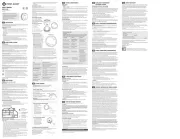
25 Juli 2025
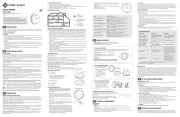
8 Juli 2025

11 Juni 2025
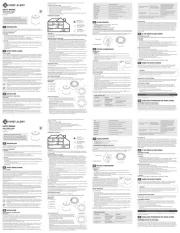
11 Juni 2025
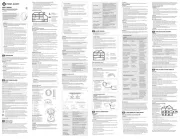
31 Mai 2025
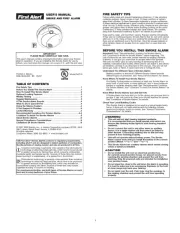
31 Mai 2025

31 Mai 2025
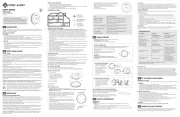
31 Mai 2025
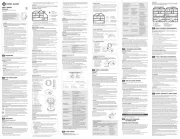
31 Mai 2025

31 Mai 2025
Bedienungsanleitung Rauchmelder
- TEF
- Smartwares
- M-e
- X-Sense
- König
- EMOS
- Vivanco
- Egardia
- Busch-Jaeger
- Blaupunkt
- Pentatech
- REV
- EQ-3
- Somfy
- Inovonics
Neueste Bedienungsanleitung für -Kategorien-
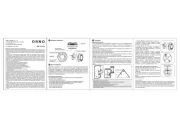
5 August 2025

31 Juli 2025

16 Juli 2025
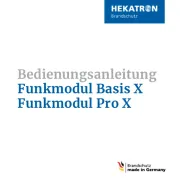
16 Juli 2025
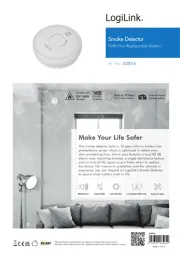
16 Juli 2025
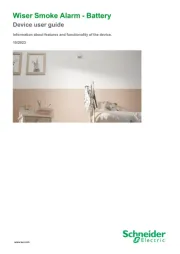
10 Juli 2025
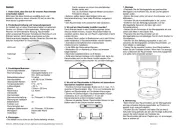
7 Juli 2025
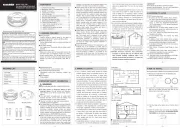
7 Juli 2025
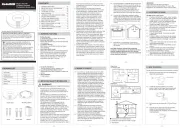
7 Juli 2025
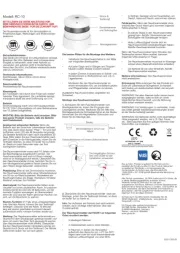
6 Juli 2025